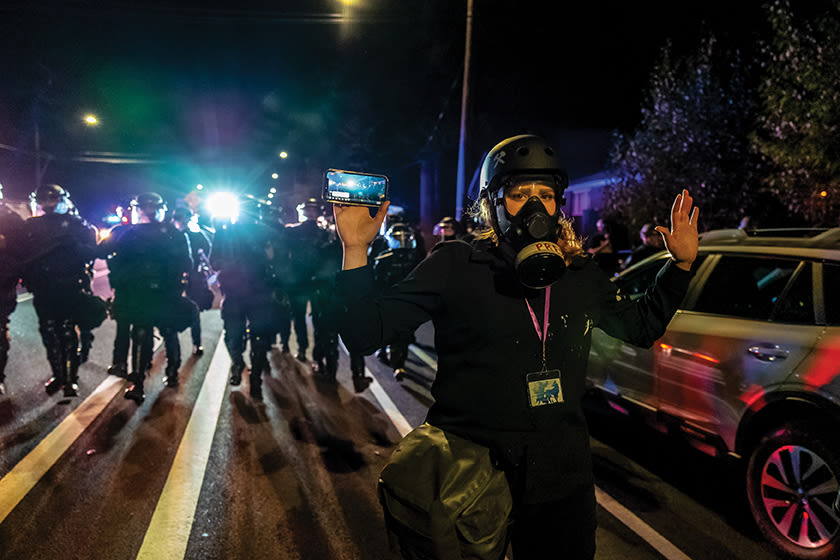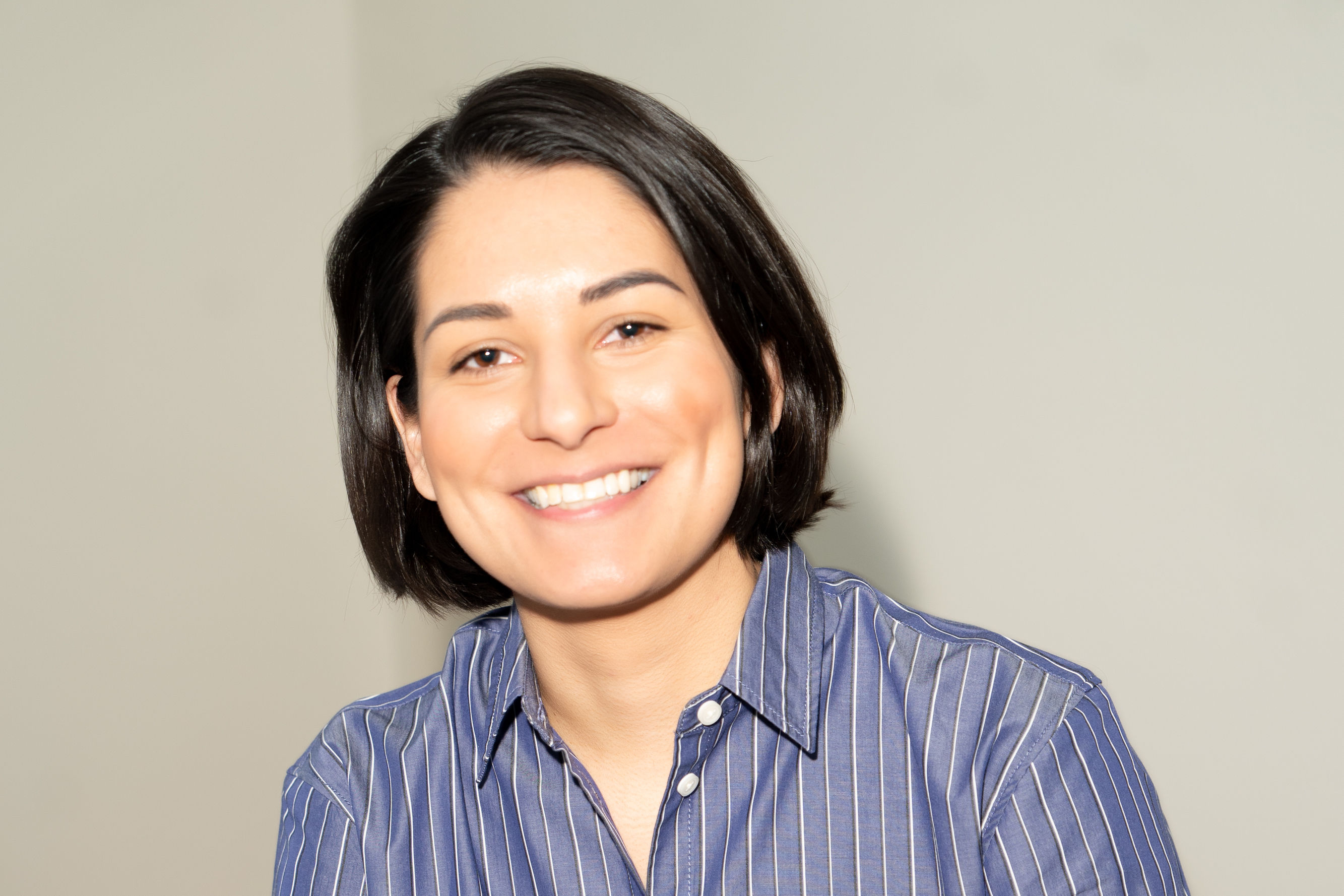Amid an Uncertain Year, a New Vanguard Emerges in Portland Journalism

Throughout the summer, and into the fall, a new class of citizen/activist journalists emerged to chronicle the stories, racking up huge followings on Twitter, many putting their Venmo and Cashapp details into their handles, and crowdsourcing gear like bulletproof vests.
Garrison Davis was a 17-year-old student at NW Film Center last May when protests over the murder of George Floyd began. “I just saw a lack of on-the-ground coverage that I felt was in-depth enough,” he says of his decision to start filming, publishing his videos on Twitter. He began with 20 followers. Now, he has almost 60,000.
Davis is one of a handful of independent journalists who remain at the front lines of the city’s protest coverage, many of whom work without the muscle of a mainstream media publication behind them, making their money through CashApp, Venmo, and Paypal, licensing fees for their videos, and freelance work. In a real sense, the world has seen the Portland protests unfold through their eyes.
“If it wasn’t for the Venmo stuff, I wouldn’t have been able to sustain it,” says Sergio Olmos, whose protest coverage garnered him bylines in the New York Times. Now on contract with Oregon Public Broadcasting, he began reporting on the protests while also working two other jobs.
At first, independent journalists were thicker on the ground than staff reporters—media outlets were leery about sending people out in the early days of the pandemic. “When we would get mistreated or hit [by police], nobody, none of the big organizations were saying anything, the mayor wasn’t tweeting about it,” says Olmos. He notes it took violence against staffers from established news organizations—journalists at the Oregonian and the Portland Tribune, for example, reported being hit with batons and shoved into walls—for that dial to move.
The sudden proliferation of independent journalists raised other questions: if anyone with a smartphone can call themselves a journalist, what does it mean to be one? Take the 45th Parallel Absurdist Brigade (@45thabsurdist), which calls itself a press collective, but makes clear that “our support lies with the demonstrators.” But Andrew DeVigal, chair in journalism innovation and civic engagement at the University of Oregon, says readers know reporters have a personal perspective: “It’s not a matter of being objective, it’s really about being transparent.”
Still, DeVigal points out that identifying yourself as a journalist doesn’t necessarily make you one. “Andy Ngo called himself an independent journalist,” he says, referring to the disgraced writer-provocateur from Portland. “But then clearly [he] was editing other people’s footage to misrepresent what was actually happening. That’s not journalism.” The word is defined, as Olmos points out, less by a press pass, a degree, or even a Twitter following, and more by the work individuals are doing on the ground.
Ultimately, Portland’s media ecosystem, which has been contracting for years given industry cutbacks, swelled anew in 2020. “If you chase your own stories and have curiosity, and you have institutional support, that’s the best you can ask for,” says Olmos, who says he’ll continue to report the news, even when his OPB contract expires. Davis concurs—as long as people keep coming out, he says, “I plan to keep reporting.”




